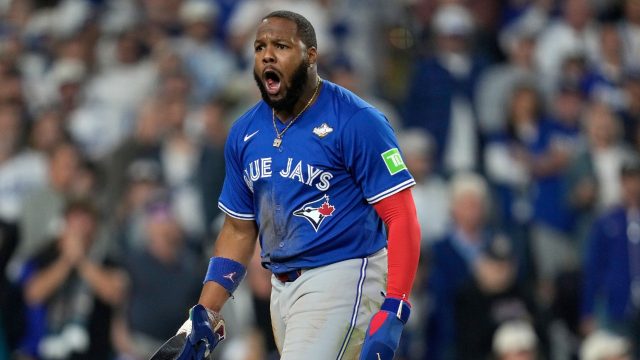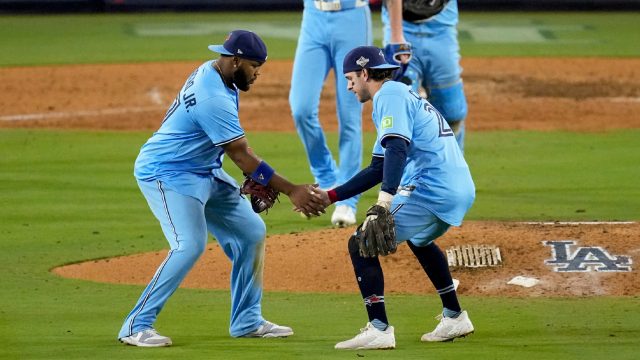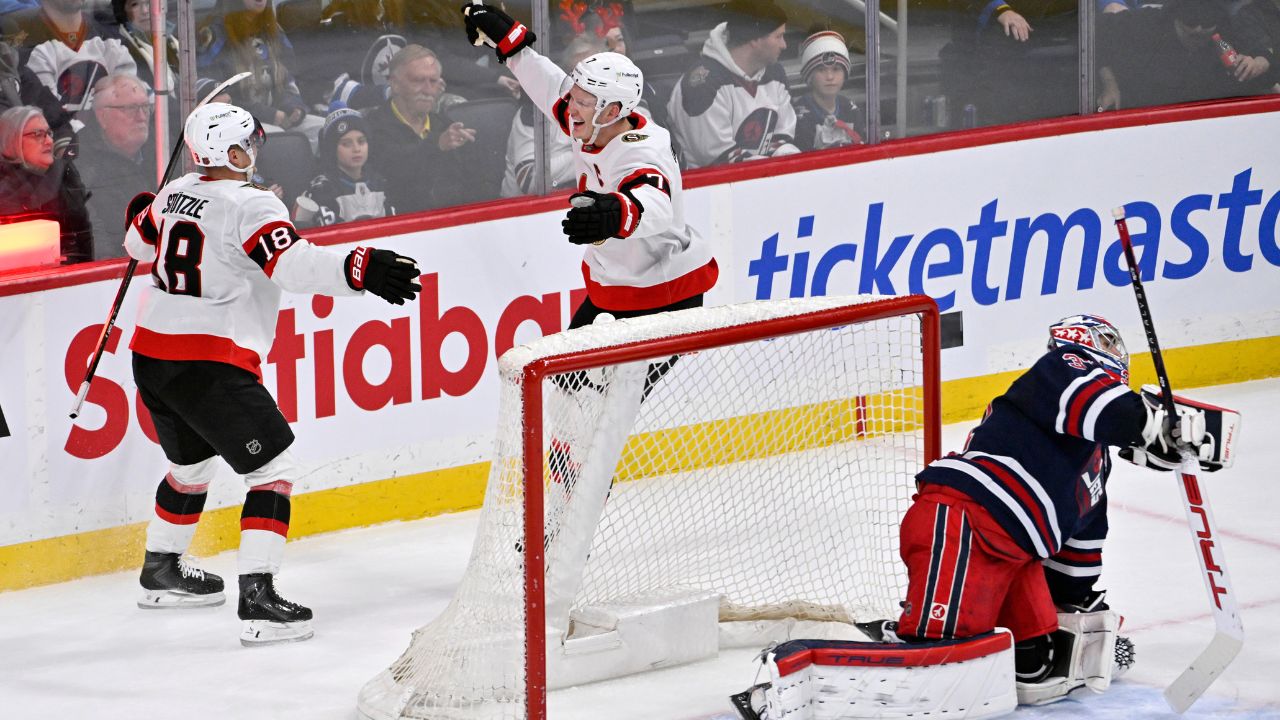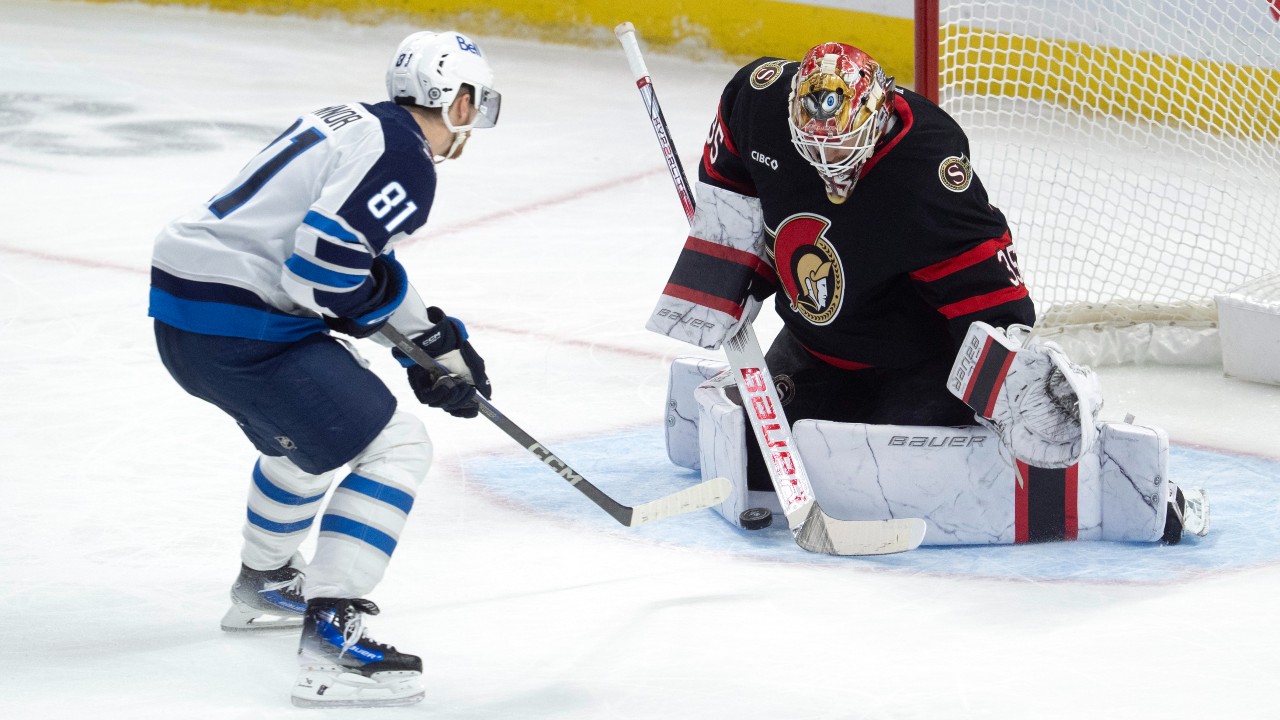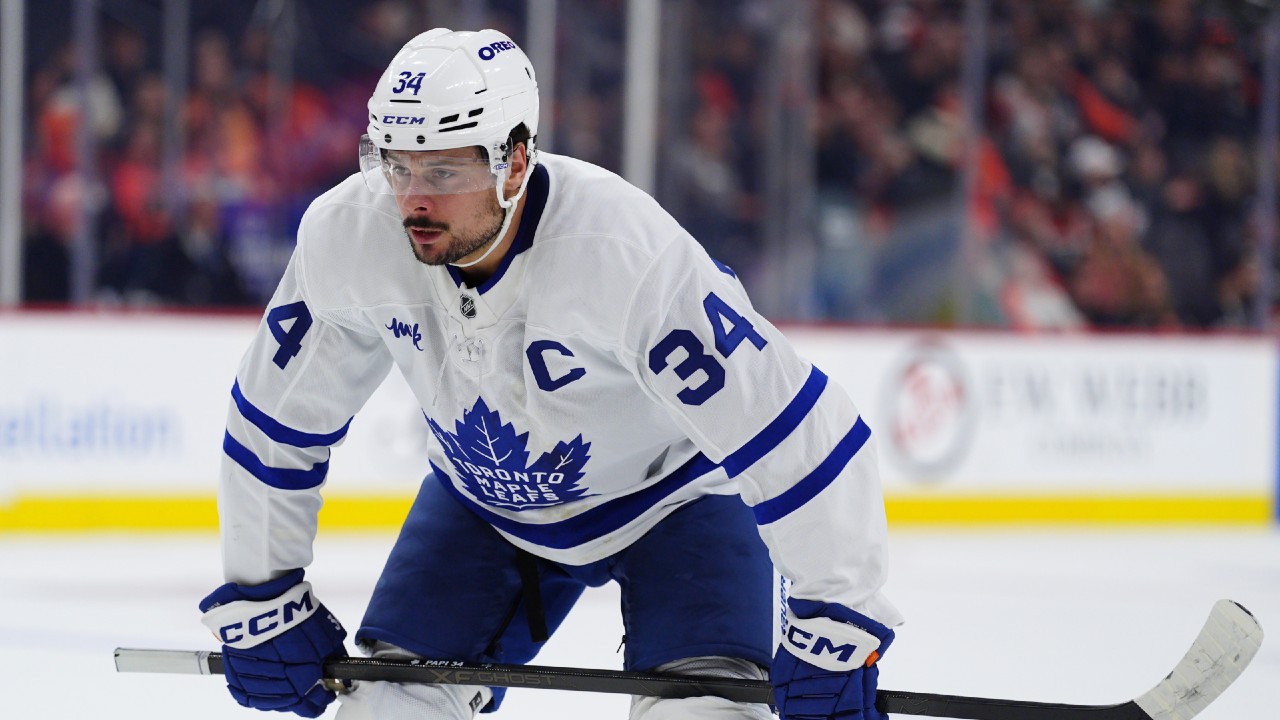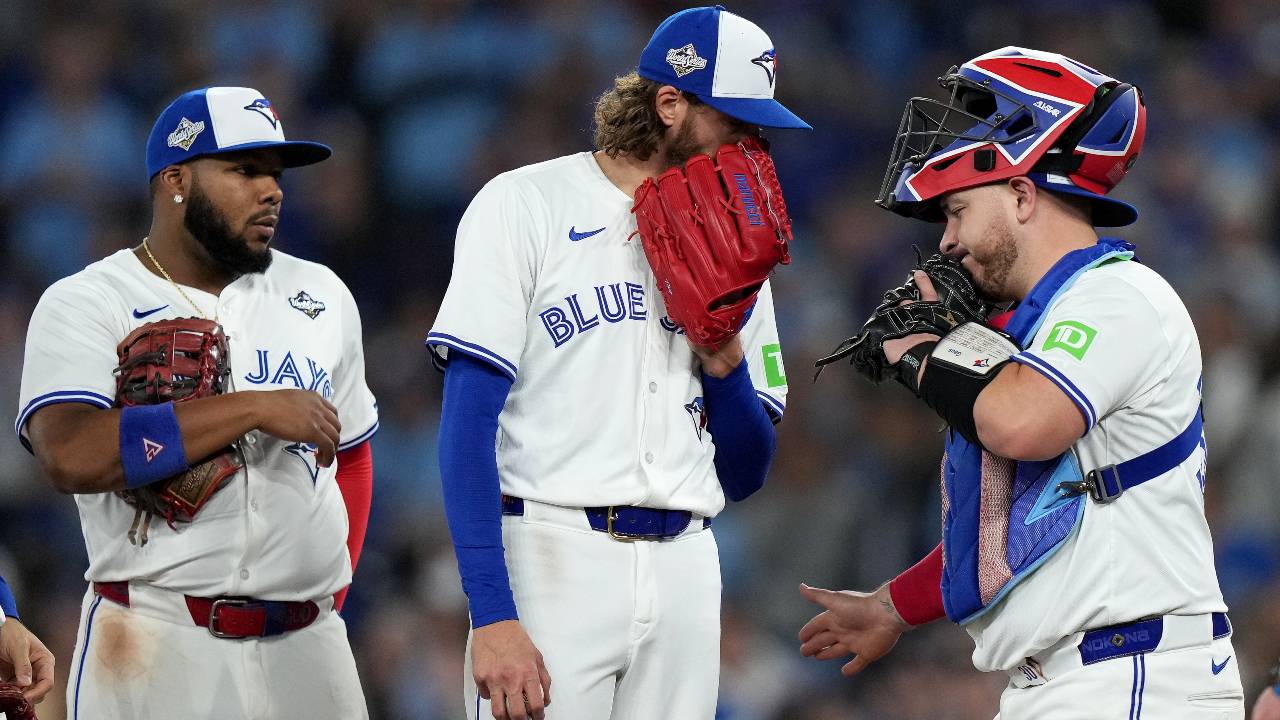
TORONTO — This week at Dodger Stadium, after losing an agonizing, 18-inning heartbreaker in hostile territory, creating a 2-1 World Series deficit while ceding home field advantage to a modern-day dynasty and heavily-favoured juggernaut built upon more financial might and analytical savvy than any organization in the sport, the 2025 Toronto Blue Jays did what they always do and overcame all odds, swinging their way off the ropes and staging an improbable rally to move within a win of the franchise’s first championship in over three decades.
With two chances to finish the job at home this weekend, the Blue Jays have some margin for error and don’t need to act with quite the level of desperation as the Dodgers, who, despite their current predicament, remain baseball’s most dangerous, talent-laden team. It wasn’t so long ago that the Blue Jays were in their position, needing to win the final two games of a series to stave off elimination. And we all know how that went.
So, the Blue Jays could save themselves and their fans a great deal of unease by taking care of business Friday night in Game 6. Here are some of the tactical choices Blue Jays manager John Schneider and his staff will contemplate ahead of it.
How should the Blue Jays line things up against Yoshinobu Yamamoto?
George Springer — DH
Nathan Lukes — LF
Vladimir Guerrero Jr. — 1B
Bo Bichette — 2B
Daulton Varsho — CF
Alejandro Kirk — C
Addison Barger — RF
Ernie Clement — 3B
Andrés Giménez — SS
Bench
Tyler Heineman
Ty France
Davis Schneider
Isiah Kiner-Falefa
Myles Straw
-
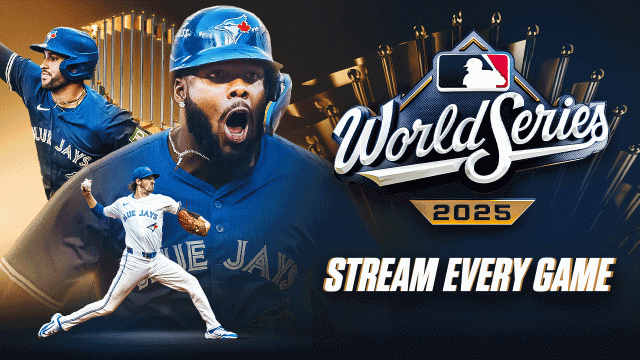
-
Watch the Blue Jays in the World Series on Sportsnet
The World Series is coming back to Toronto with the Blue Jays one win away from capturing their first title since 1993. Watch Game 6 on Friday at 8 p.m. ET / 5 p.m. PT on Sportsnet and Sportsnet+.
George Springer (midsection, knee, the ravages of time) was a game-time decision in Game 5, and available to pinch-hit off the bench, so let’s assume Thursday’s off day gives him enough time to get back in Toronto’s lineup. Regardless of how compromised he’ll be, Springer’s mere presence and ability to work persistent plate appearances atop the lineup is beneficial for everyone that hits after him.
Meanwhile, the Blue Jays clearly need to make an adjustment to Yamamoto after allowing him to retire the final 20 batters he faced in Game 2 while throwing his second consecutive complete game. Of Toronto’s 32 plate appearances, 24 finished within four pitches or fewer. If nothing else, the Blue Jays must find a way to give Yamamoto tougher battles, forcing him to work as they did in Game 2’s first inning when he threw 23 pitches.
What makes that difficult is Yamamoto’s arsenal runs six offerings deep, giving him a plethora of ways to adjust to the Blue Jays, as well. We’ve already seen Yamamoto go from seldom throwing his splitter earlier this post-season to using it over 30 per cent of the time — his most-thrown pitch — in his back-to-back complete games. His splitter usage in Game 2 was his second highest in an outing this season.
He can adjust within starts, too. In Game 2, Yamamoto threw over 50 per cent splitters his first trip through the lineup, and only 27.2 per cent in his second as he leaned heavier on his fastball. His third time through, Yamamoto adapted again, leading with his cutter — which he threw only three times his first two trips — while upping his curveball usage and largely shelving his splitter:
Yoshinobu Yamamoto, pitch usage by trip through lineup in World Series Game 2
|
|
1st trip |
2nd trip |
3rd trip |
4th trip (5 BF) |
|
Four-seamer |
18% |
36% |
20% |
25% |
|
Splitter |
52% |
27% |
13% |
35% |
|
Curveball |
24% |
14% |
27% |
20% |
|
Cutter |
3% |
9% |
33% |
– |
|
Slider |
– |
9% |
7% |
10% |
|
Sinker |
3% |
5% |
– |
10% |
Ultimately, the Blue Jays went 0-for-16 against Yamamoto’s splitter and curveball, whiffing over a third of the time they swung at them. The one pitch the Blue Jays hit well off Yamamoto that night was his fastball. Springer doubled off of it; Guerrero drove one to the wall in left; Kirk lined one back up the middle at 101 m.p.h. directly into Andy Pages’ glove. Toronto’s average exit velocity against the pitch was 98.6 m.p.h.
It’s the offering Yamamoto uses most often in the zone, so if Toronto’s hitters are ready for it — as Davis Schneider and Guerrero were in the first inning against Blake Snell in Game 5 — they could find their way to more than the five baserunners they mustered last time around.
But that’s easier said than done against a guy who commands his off-speed as well as anyone and throws a curveball nearly 20-m.p.h. slower than his heater. The Blue Jays have to get to that fastball to do damage against it. And Yamamoto only threw it consecutively twice in Game 2. So, if you get one, better not miss.
How long will Kevin Gausman’s leash be?
You didn’t go all the way to Game 6 of the World Series to get cute with the ace of your pitching staff. Gausman’s started a third trip through the order in each of his starts this post-season, and if he’s as dialled in and effective on Friday as he has been since the calendar flipped to October — Gausman has a 2.55 ERA over five playoff outings — he’ll do it again.
Of course, a third trip in Game 6 is really a sixth trip in the series, so it’s imperative that Gausman continues to get the uncomfortable swings on splitters and uncertain takes on low fastballs his game’s predicated on. Just as it’s important to remember things can turn in a hurry, as they did in Game 2 when Gausman came out for the seventh inning and gave up a deep fly ball to Freddie Freeman before a pair of homers to Will Smith and Max Muncy.
Both homers came off of fastballs, a pitch Gausman used heavily in Game 2. As he retired 15 in order from the second through sixth innings, he threw a heater 78.1 per cent of the time. He finished with his lowest splitter usage in his last 10 outings. Does he flip the script this time around?
There’s an argument for it. The Dodgers performed well against splitters in the regular season (.237 AVG, .438 SLG) but have struggled against them so far in the World Series (.045 AVG, .091 SLG) and the post-season more broadly (.176 AVG, .265 SLG). Gausman’s earned a 52.1 per cent whiff rate with his splitter so far this October with the third-lowest opponents average — .056 — of any pitch in a single post-season since the beginning of the pitch-tracking era in 2008.
And while he leaned on his fastball in Game 2, the Dodgers still went 1-for-8 against Gausman’s splitter that night. And Freddie Freeman’s double off Gausman remains Los Angeles’s lone hit off a splitter in the series after they went 0-for-7 with six strikeouts against Trey Yesavage’s in Game 5.
We’ll see how it plays out. Ultimately, Gausman’s a two-pitch pitcher who throws the occasional slider. He can’t create as many novel sequences as Yamamoto can. Dodgers hitters have a very good idea what they’re going to be getting. It’s up to Gausman to tunnel and locate so well, with stuff so nasty, that it doesn’t matter.
How should the Blue Jays deploy their bullpen?
Following an off day with potentially only one game — at most, two — remaining in the season, every Blue Jays pitcher on the roster save for Gausman and presumptive Game 7 starter Max Scherzer will be available. And it’s even possible Scherzer could pitch if these teams find themselves in another 18-inning death march. But let’s not even consider such a thing.
The true question is when they pitch, as we’ve arrived at a point in the series where pitcher-batter familiarity plays a significant role. Since 2019, hitters facing a reliever for the third time in a series have an OPS nearly 150 points higher than post-season hitters facing relievers overall in that span. And so far this post-season, hitters facing a reliever for a third time or more are hitting .245/.336/.426 with four home runs and 11 walks against 22 strikeouts.
Think of it like the third trip through rule for starters. It’s a meaningful factor teams must be cognizant of and one the Blue Jays have paid particularly close attention to throughout the post-season.
So far in the series, they’ve deployed their relievers purposefully to avoid repeating certain matchups. For instance, when accounting for intentional walks, Shohei Ohtani has so far only seen Seranthony Dominguez and Mason Fluharty twice. That means Jeff Hoffman, Louis Varland, and Chris Bassitt can all be used with confidence against him.
Mookie Betts and Freddie Freeman, meanwhile, have both seen Hoffman, Fluharty, Braydon Fisher, and Eric Lauer twice. That makes Chris Bassitt, who’s retired 19 of the 21 batters he’s faced this October while assuming a leverage relief role, an intriguing matchup against them.
An interesting push-pull could develop late in a game if the Blue Jays are trying to protect a slim lead with Will Smith and Teoscar Hernandez due up. They’ve each seen Hoffman three times in the series, with Smith reaching in each of his last two plate appearances while Hernandez is 1-for-2.
Would Schneider stick with his closer in that scenario or try to give Smith and Hernandez a different look? Those are the kinds of series-defining dilemmas managers are forced into this time of year. And they’ll only get trickier should the series extend to a seventh game.


